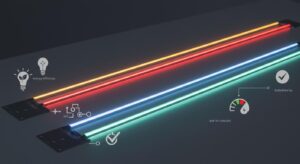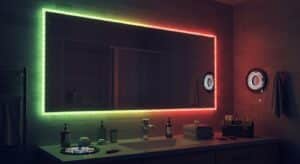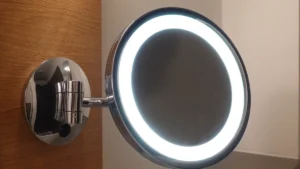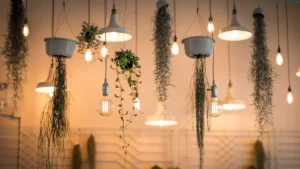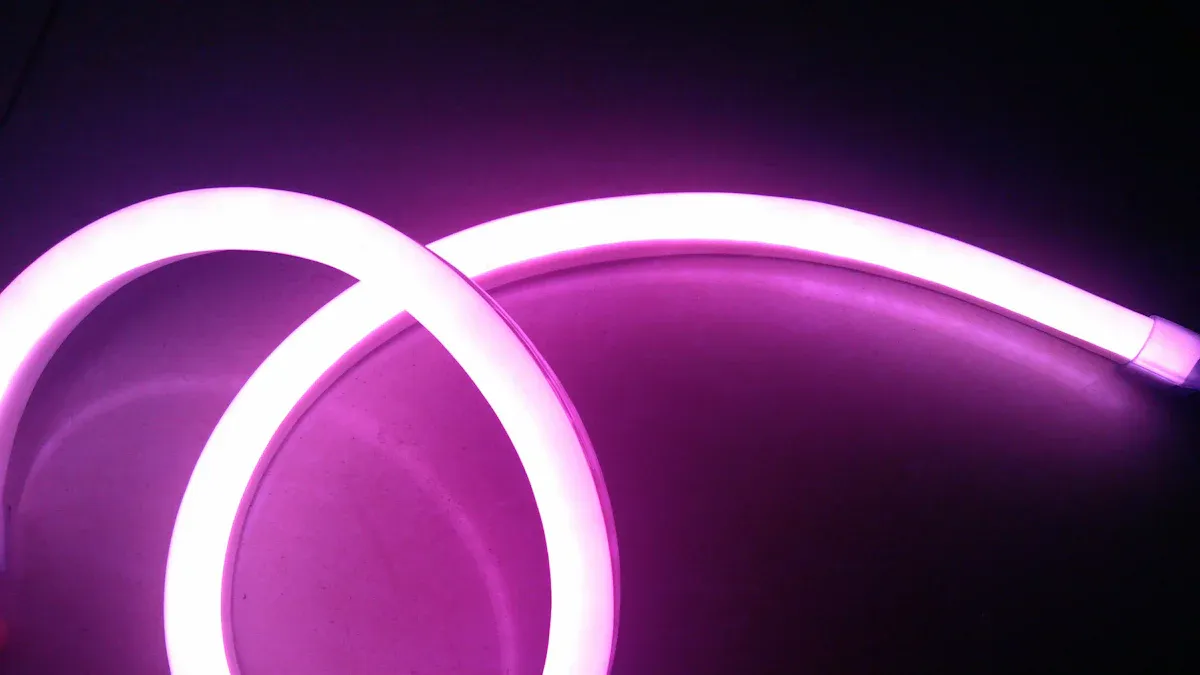
High-density LED strip lights have more LEDs per metre. They give brighter and steadier light. A regular LED strip has 300 LEDs over 16.4 feet. High-density strips have 600 LEDs in the same length. This makes them twice as bright. They are perfect for places needing better lighting.
Key Takeaways
High-density LED strip lights have more LEDs in each metre. They are twice as bright as regular LED strips. This makes them perfect for places needing strong, even light.
These strips save energy by using up to 80% less power. They give great light while saving money and helping the planet.
High-density LED strips can last over 50,000 hours. This means you won’t need to replace them often. Their long life makes them a smart and affordable choice for lighting.
Understanding High-Density LED Strip Lights
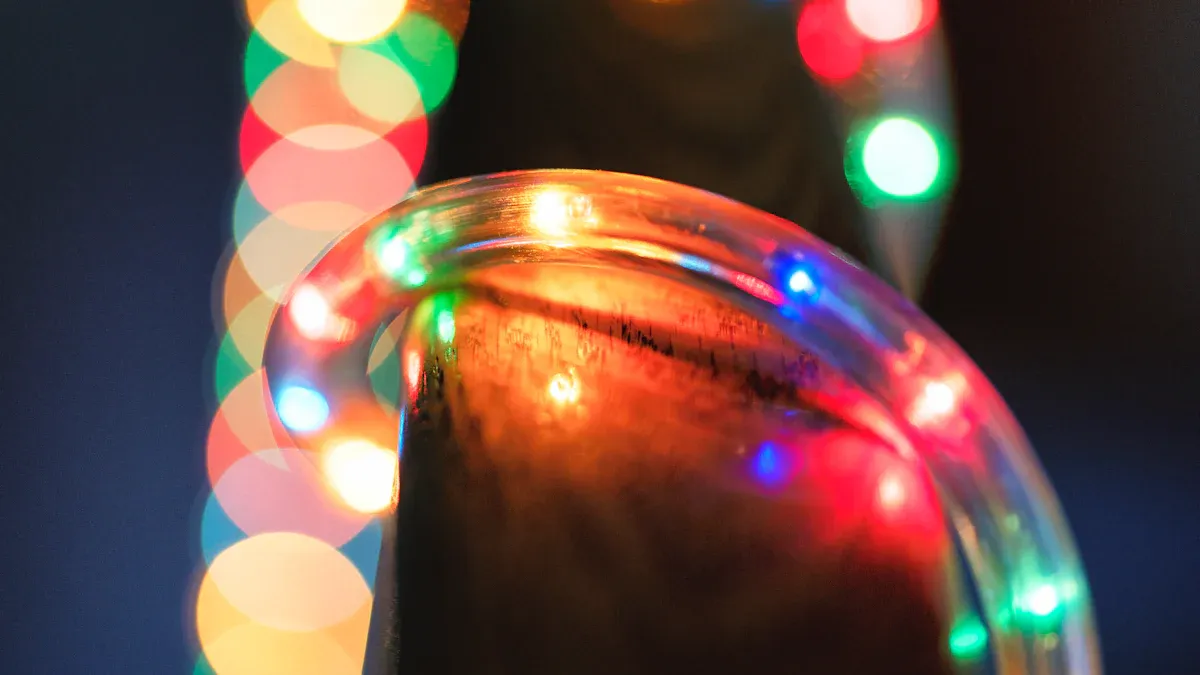
What are high-density LED strip lights?
High-density LED strip lights have more LEDs in each metre. This makes them brighter and gives a steady light. For example, high-density strips have 120 LEDs per metre. Standard strips usually have 60 LEDs per metre. This extra brightness is great for areas needing strong, smooth light.
These strips are not just bright but save energy too. They use less power while working very well. Their small size makes them easy to use in creative ways.
How high-density LED strips differ from standard-density strips
High-density LED strips are brighter and more even. They have more LEDs close together, so the light looks smoother. Standard strips have fewer LEDs with gaps, making the light uneven.
Here’s a comparison:
High-density strips have 600 LEDs on a 16.4ft reel. Standard strips have 300 LEDs.
High-density strips are twice as bright as standard ones.
Standard strips work well for soft lighting. High-density strips are better for focused or decorative lighting.
Examples of LED counts in high-density LED strips
High-density LED strips come in different types for various needs. Examples include:
120 LEDs per metre: Good for lighting buildings or display shelves.
144 LEDs per metre: Great for detailed work or decorations.
240 LEDs per metre: Best for very bright and precise lighting.
These options help you pick the right strip for your needs. High-density LEDs are popular because they are useful and efficient. The market for flexible LED strips was worth $3.0 billion in 2023. It is expected to grow to $6.8 billion by 2032, increasing by 9.7% each year.
Benefits of High-Density LED Strip Lights
Brightness and even lighting
High-density LED strips are very bright and shine evenly. They have more LEDs per metre, so no dark spots appear. For example, a good strip gives 450 lumens per foot. This is much brighter than T8 fluorescent lights, which give 1800 lumens over four feet. These strips are perfect for bright and even lighting in workspaces or displays.
Energy-saving and less heat
High-density LEDs use less energy but still shine brightly. A 1-metre strip with 120 LEDs uses about 8 watts. A 60-LED strip uses only 4 watts. Even with more brightness, they stay cool and safe. These strips can cut energy use by 80%, saving money and helping the planet.
Long-lasting and strong
High-density LED strips last a long time, over 50,000 hours. They are made with strong materials and good designs to handle heat. This keeps them working well without losing brightness. Buying these strips means fewer replacements and saving money over time.
Useful for many purposes
High-density LED strips can be used in many ways. Use them for decoration, soft lighting, or to highlight features. They offer many colours, light up instantly, and stay cool. These strips work well in homes, shops, or offices. Their flexibility makes them fit all your lighting needs.
Applications of High-Density LED Strip Lights
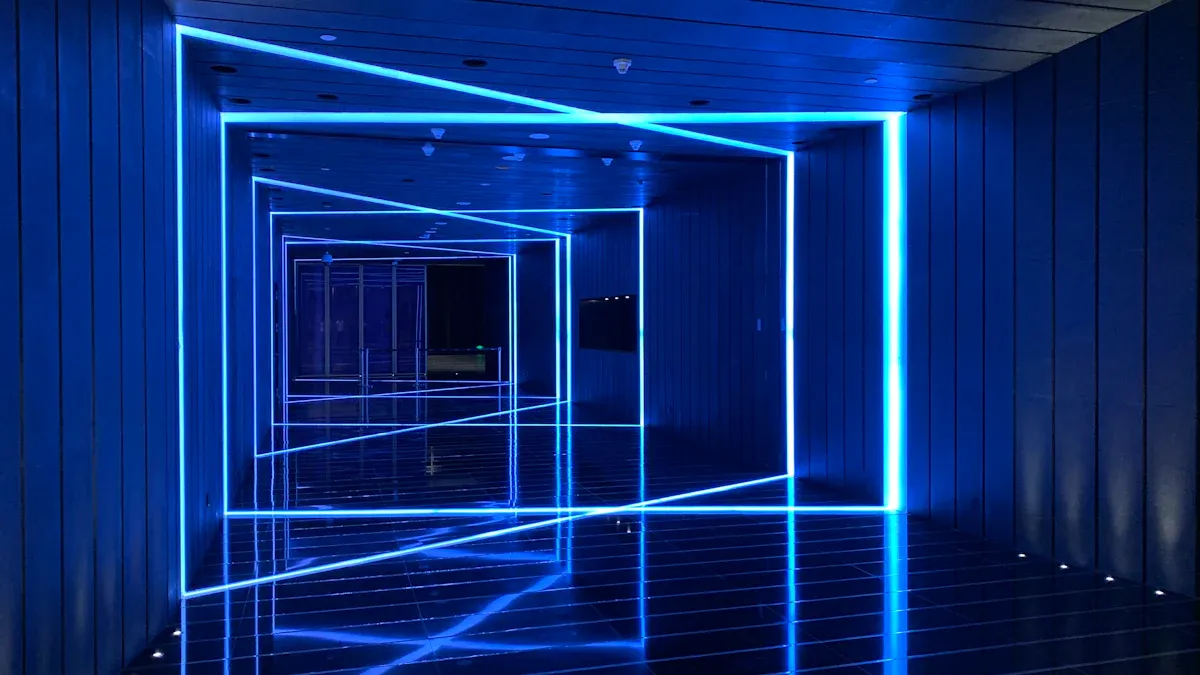
Architectural and accent lighting
High-density LED strips work well for architectural and accent lighting. They can highlight features like columns, ceilings, or stairs. These strips make living rooms or bedrooms feel warm and modern. The table below shows how different LED densities fit various uses:
LED Density | Level Of Density | aplicaciones |
|---|---|---|
30 LEDs per metre | Low-Density | Soft lighting for bedrooms; Accent lighting for stairs or frames |
60 LEDs per metre | Medium Density | Under-cabinet lighting; Shelves in shops; Backlit TVs or mirrors |
120 LEDs per metre | High-Density | Bright lighting for desks; Kitchen cabinets; Closets or wardrobes |
180 LEDs per metre | Ultra-High Density | Lighting for buildings; Photography; Signs or labs |

Retail and display lighting
Shops benefit a lot from high-density LED strips. These strips make products look better with even brightness. Use them to light up shelves, displays, or digital signs. They save energy, cutting costs while keeping great lighting quality.
Task lighting and workspace illumination
High-density LEDs are great for task lighting and workspaces. They give bright light, helping you see details clearly. Their even light removes dark spots, making work easier. They use little power, saving energy. Use them for study desks, kitchen counters, or labs. These strips are reliable and efficient.
Creative and decorative uses
High-density LED strips are perfect for creative and decorative ideas. Use them to make patterns, highlight art, or create colourful backdrops. Their flexibility lets you try different shapes and colours. They are great for parties, events, or festive decorations, adding fun and style to any space.
Choosing the Right High-Density LED Strip Lights
Understanding your needs and brightness levels
To pick the right high-density LED strip, think about your needs. Different tasks need different brightness levels, measured in lumens per foot. Accent lighting needs 150-350 lumens per foot. Task lighting may need up to 700 lumens. The table below shows common uses and their brightness:
aplicaciones | Suggested Lumen/Foot |
|---|---|
Accent/Mood lighting | 150-350 |
Under-cabinet lighting | 175-525 |
Task lighting (close) | 275-450 |
Task lighting (far) | 350-700 |
Indirect lighting | 375-575 |
Fluorescent tube replacement | 500-950 |
More LEDs mean brighter and smoother light. This is great for detailed designs or focused lighting. Always match the brightness to your needs for the best results.
Thinking about energy use and costs
Energy use is important when choosing LED strips. High-density strips use more power because they are brighter. But they still cost less than old-style lights. For example, LED strips give 80-100 lumens per watt. They cost only £1-£2 a year if used 3 hours daily. This saves money and helps the environment. Think about your budget and long-term savings when deciding.
Checking quality and product details
Look at product details to make sure they work well. Check for colour consistency, strong PCBs, and good heat control. These features stop overheating and make the strips last longer. Strong adhesives also keep them in place. Good quality strips last longer and are worth the money.
Looking at warranties and support
A good warranty shows the maker trusts their product. Look for warranties covering at least 50,000 hours of use. This ensures the strip stays bright for a long time. Features like even colour and flexible designs are also helpful. Good customer support makes it easier to get help when needed.
High-density LED strip lights give bright and even lighting. They last over 50,000 hours, making them long-lasting and affordable. Use them in homes, workplaces, or for creative ideas.
Key Benefits | Description |
|---|---|
Brightness | Brighter light improves how well you can see. |
Uniform Lighting | Even light spreads out smoothly without dark spots. |
Versatility | Works well for many uses, from home to professional setups. |
Try these modern strips to upgrade your lighting projects!
FAQ
Why are high-density LED strips better than standard ones?
High-density LED strips are brighter and spread light evenly. They have more LEDs in each metre, making them great for detailed work or decoration.
Can high-density LED strips be cut to size?
Yes, you can cut them at marked spots. This lets you adjust the strip length for your project without harming the LEDs.
Are high-density LED strips safe to use?
Yes, they stay cool and use low voltage. This makes them safe for homes, offices, or decorations when set up properly.
See Also
Comparative Analysis Of Bright LED Strips For Various Uses
Selecting The Perfect LED Strip Lights For Linear Lighting
Understanding The Functionality Of COB LED Strip Lights
Benefits Of Using COB LED Lighting Solutions
Innovative Designs With Versatile COB LED Strip Lights
